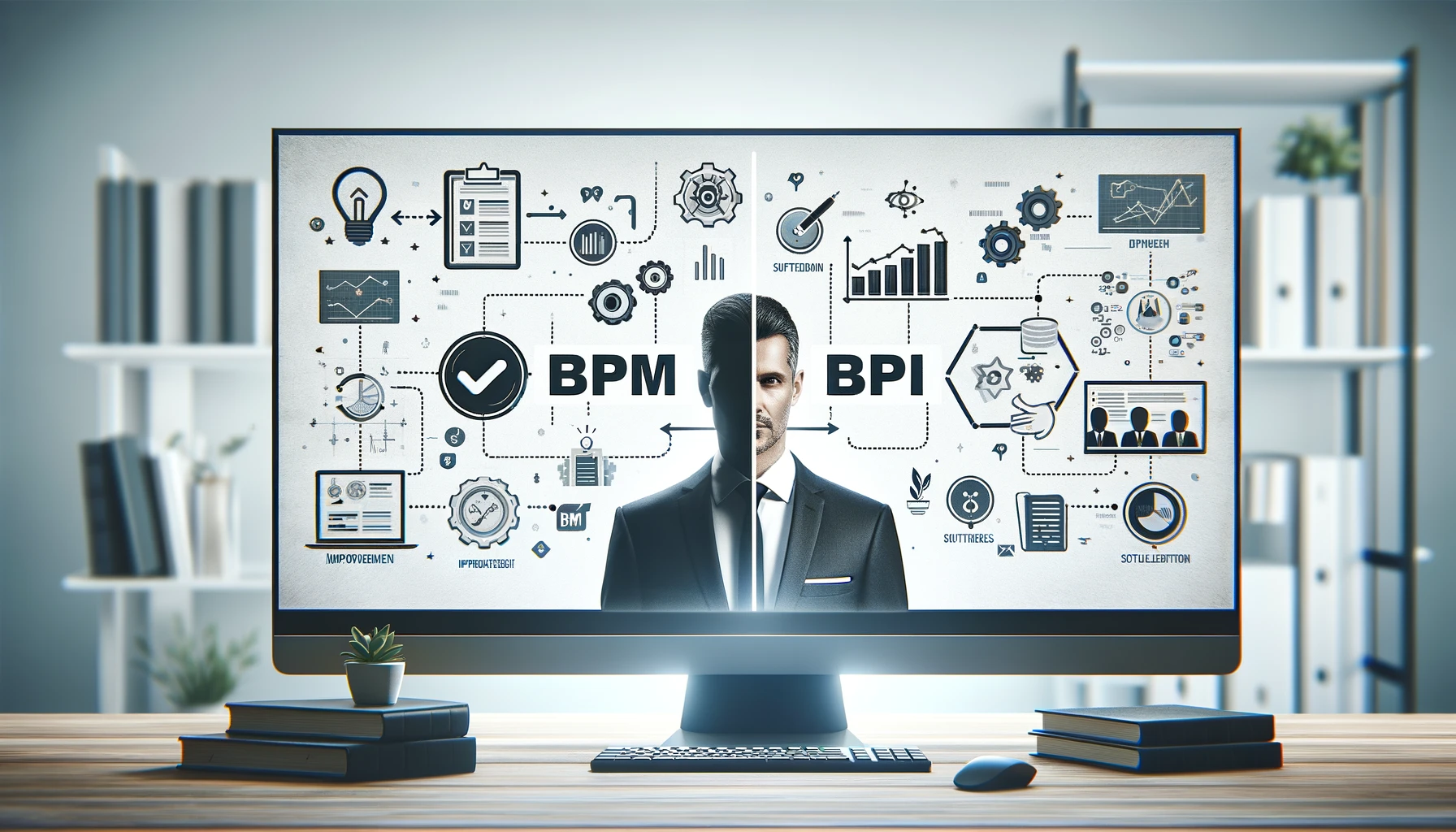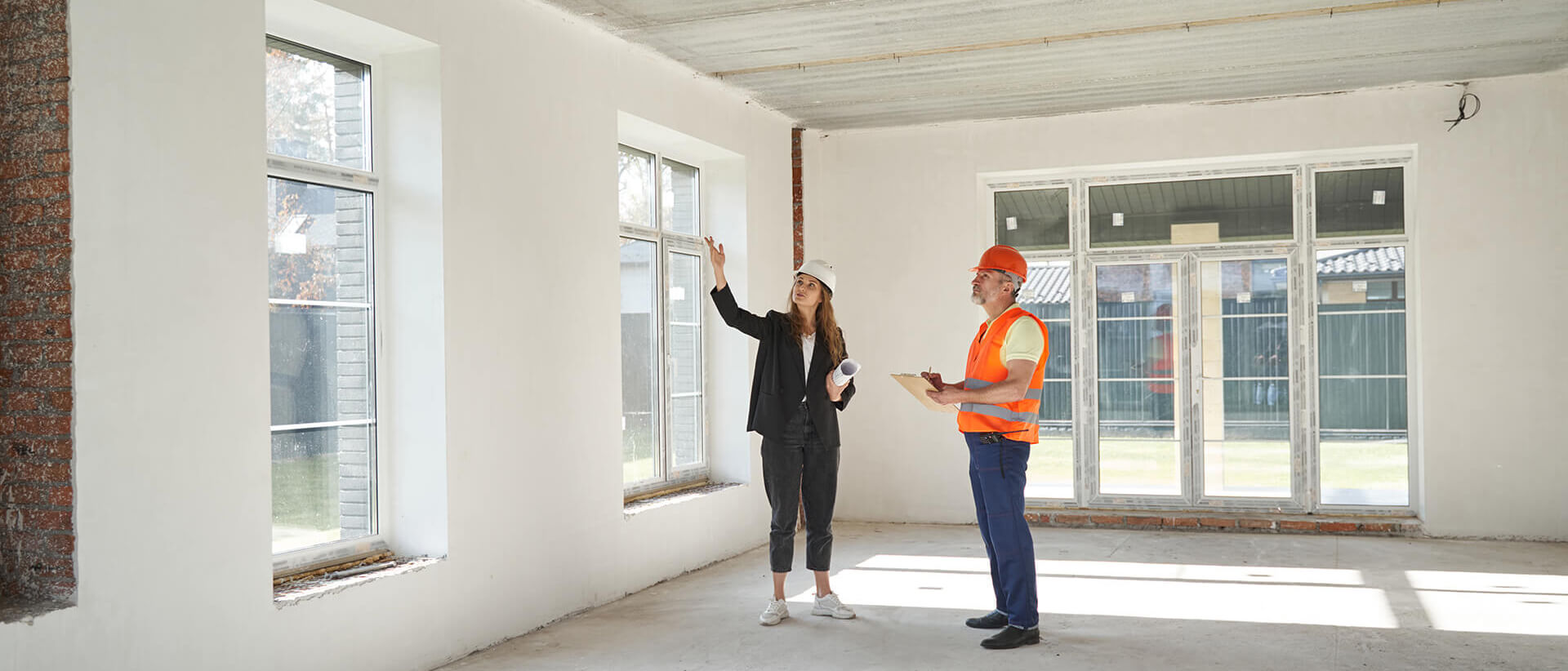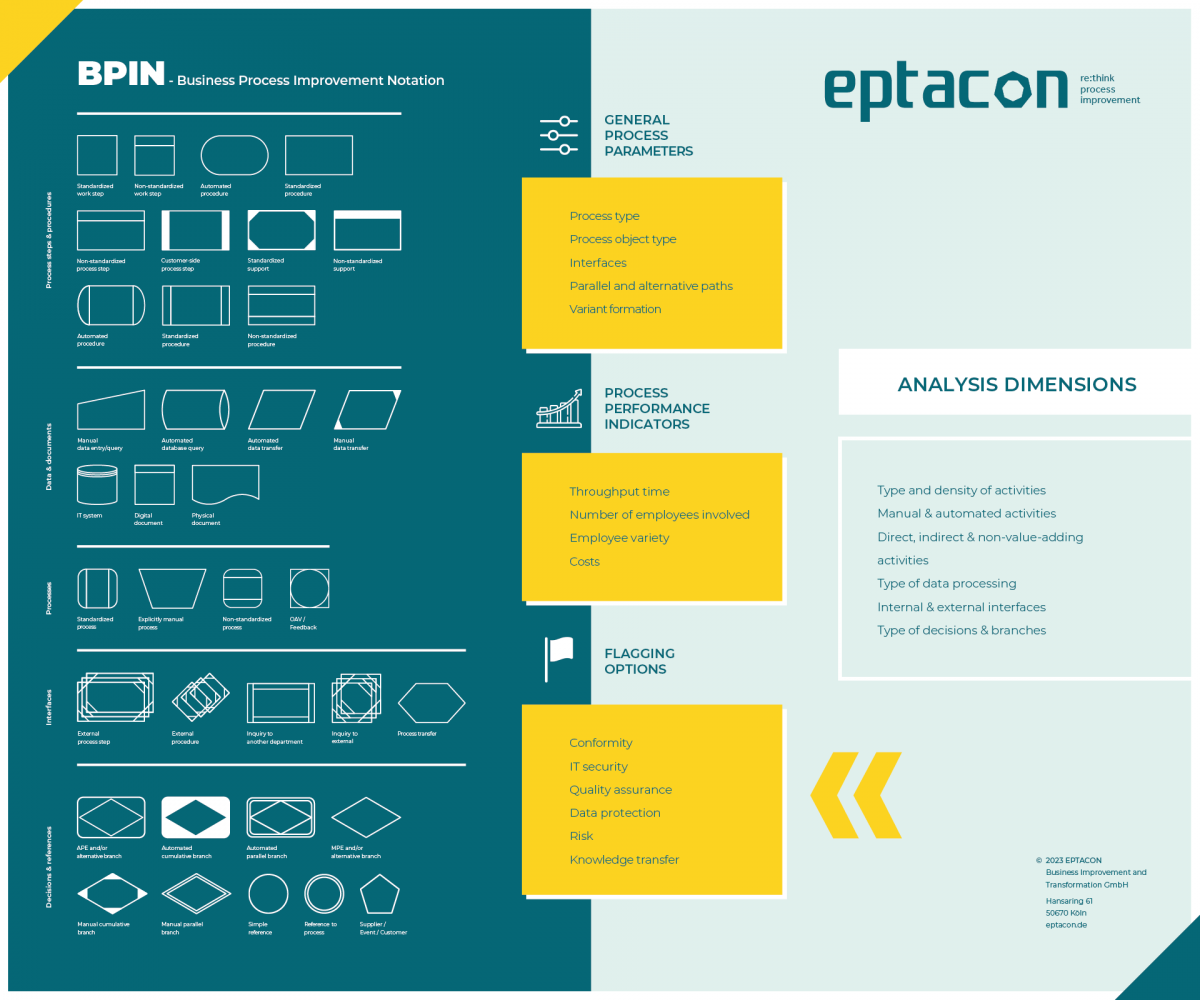Both our private and professional lives are shaped by digitalization, globalization and constant change. In this context, it is essential for companies not only to know their processes, but also to continuously improve them. Process modelling plays a key role here.
What is process modelling?
Process modelling refers to the graphical representation and documentation of a company's business processes. It uses various symbols and notations to depict the sequence of activities, decisions, roles and interactions within a process. Process modelling plays an important role as it is the foundation for all process-related analysis steps.
The goals of process modelling
Create transparency: A clearly modelled process creates a clear picture of the processes within a company. This transparency is often the first step in identifying inefficiencies, bottlenecks or sources of error.
Improve communication: A visual representation is often easier to understand than complex written instructions. Employees from different departments or hierarchies can use the models to develop a common understanding of the processes.
Quality management: Uniformly documented processes ensure that tasks are carried out consistently and to a high quality. This minimizes errors and increases customer satisfaction.
Identify optimization potential: Modelling can serve as a starting point for the analysis and optimization of processes. By comparing actual and target processes, companies can identify and implement optimization potential.
Risik management: By recognizing and documenting potential risks within a process, companies can develop targeted countermeasures.
How does process modelling work in practice?
The creation of a process model usually begins with workshops, interviews and observations. Experts and employees involved in the processes are involved in order to obtain an accurate picture of the real processes. In the next step, this process is digitally modelled using specialized tools. There are numerous process modelling languages such as BPMN (Business Process Model and Notation), UML (Unified Modelling Language) and EPC (Event-driven Process Chain). However, these often reach their limits in optimization projects, particularly in terms of depth of expression (to represent complex business processes completely and precisely), flexibility and analysis options.
And what does process modelling have to do with building a house?
A lot! Process modelling and laying a foundation when building a house are crucial work steps that must be carried out correctly, accurately and with foresight. Like the house foundation, process modelling is the basis. Both
are the basis for further work
ensure stability
allow corrections only with great expenditure of time and money
enable a view of the overall picture
require the necessary expertise
It is therefore crucial how and with which tools this foundational work is implemented. The quality and depth of insights in the subsequent stages of the optimization process (analogous to building a house) depend on this. Consequently, relevant process metrics (e.g., process parameters, performance indicators, etc.) should already be taken into account during the modeling phase.
Eptacon Modeller: the future of process modeling
Imagine that already in the modelling phase, each process object is assigned an individual complexity scoring and other performance data - standardized and benchmarkable!
This is our BPIN - Business Process Improvement Notation. The world's first complexity-orientated notation for benchmark-capable measurement and evaluation of process performance and process complexity. The BPIN has been developed to capture exactly the level of detail that is practicable for meaningful process visualisation and complexity measurement.



